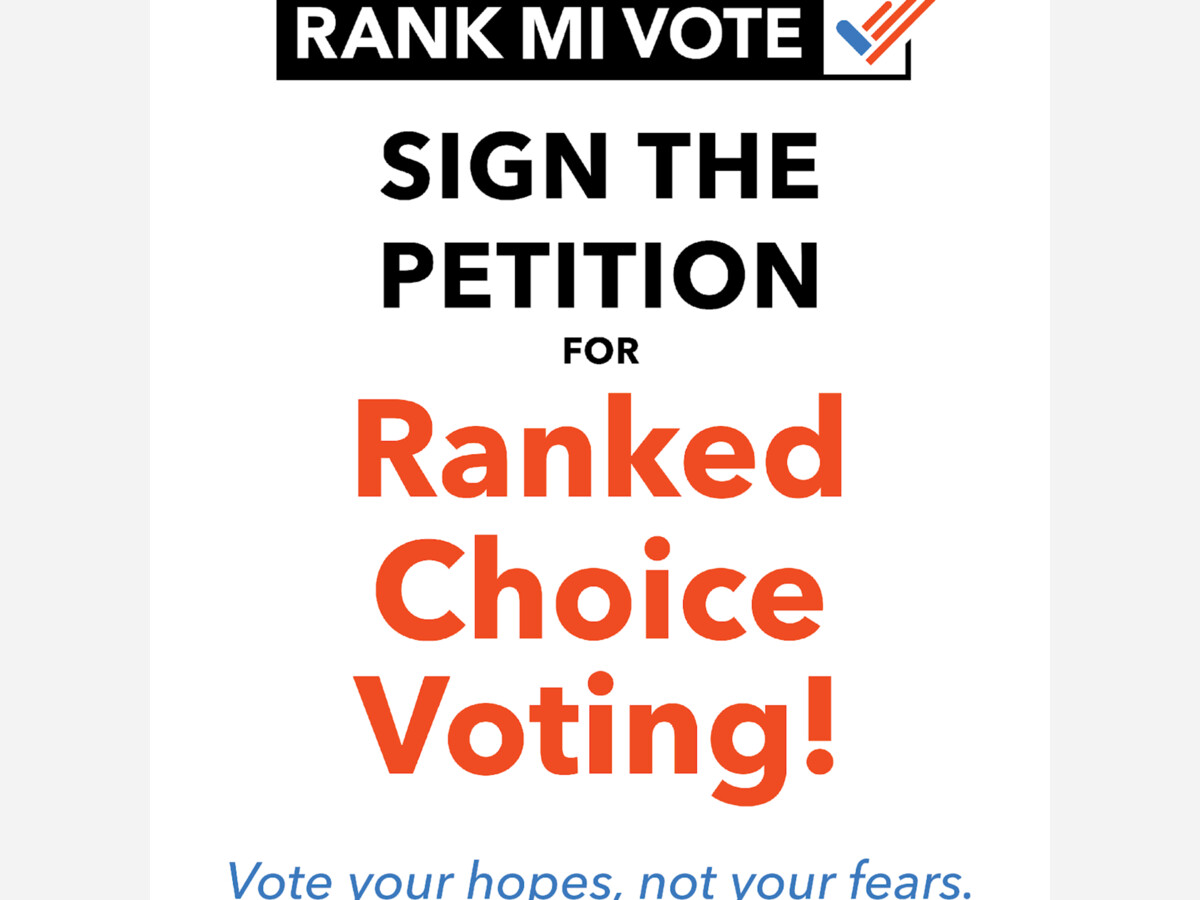Image


One of the major 2026 ballot initiatives (currently in the petition phase) is to implement Ranked Choice Voting in Michigan. I spoke with Pat Zabawa, Executive Director of Rank MI Vote, to get a sense of the proposal. After all, there have been a flurry of political changes this year—why do we need to change the way we vote?
“Voters are increasingly dissatisfied with political outcomes right now,” Pat explained. “They want to lower the temperature of our politics and not be driven against one another by billionaire-funded attack ads. Up to nine in 10 voters in Gallup and Pew polls nowadays respond that political outcomes do not represent voters’ values. When this happens, we need to find ways to empower voters.”
"Ranked choice voting does that in so many ways:
First, winning candidates need 50% of the vote. In RCV elections, the winning candidate is required to receive at least 50% of the vote. Right now, voters are punished in races with more than two candidates, where a winning candidate can receive far less than 50% of voter support.
We also get a wider field of candidates to choose from. With first past the post voting, a lot of candidates are told to “wait their turn” or “don’t split the vote” because our politics are stuck in a two-horse race. Ranked choice voting allows candidates with new ideas to enter the political arena, and allows candidates with overlapping ideals and platforms to run simultaneously without tipping the scales to an opposing party.
The biggest bonus is less negative campaigning. Negative campaigning is tearing our country, our communities, and ourselves apart right now. In our current voting system, political parties are incentivized to run negative campaigns, because a vote against an opponent is the same as a vote for their candidate. In RCV, politicians have a greater chance of winning by being ranked #1 and #2 as much as possible, forcing them to reach out to a broader base of voters and even collaborate with other politicians.
And all this adds up to higher voter turnout. Voters who are excited about their choices are more likely to show up to the polls. Since ranked choice voting was implemented in New York City, voter turnout has hit a 30-year high.”
“In an RCV election, you rank the candidates in order of your preference—1st, 2nd, 3rd, and so on. If your top choice doesn’t have enough support, your vote goes to your next choice. That way, your vote always counts, even if your favorite candidate is a long shot candidate.”
“Right now, you can only vote for one person—and sometimes the winner only gets 30% (or less) of the vote. With RCV, the winner needs real majority support.
Here’s how winning works with RCV: If more than half of voters' first choices go to a candidate, they’re declared the winner! If not, the last-place candidate is eliminated, and their voters’ second choices are taken into account. This process repeats until a candidate has 50% or more of the votes.”
“RCV helps break the two-party gridlock, gives independents and new voices a fair shot, and encourages candidates to build coalitions. It reduces toxic campaigning and big money influence—because winning takes more than just your base.”
“Americans have implemented ranked choice voting in more than 50 cities across the nation, and it’s used statewide in Maine and Alaska. New York City is the biggest jurisdiction in the United States, with over 13 million people casting ranked-choice ballots.”
“Nope! Ranked choice voting benefits voters; it’s completely nonpartisan. It creates a level playing field and rewards candidates who can collaborate.”
“Because it threatens the status quo. Politicians and special interest groups that benefit from the current broken system don’t want more voter control or fairer elections; predictable outcomes and the same old players keep them in power.
“No, the law requires you to sign the paper petition in person with one of our volunteers. Fortunately, we have a shareable list of locations on our Where Do I Sign? page in cities across the state, so we're easy to find!"
“Yes! Ranking is totally optional. You can rank as many or few candidates as you want. The power is yours.”
“The biggest objection is that it’s different from our current system. However, 96% of NYC voters have responded they found it easy and 94% of Utah voters said ranking votes was simple.”
"Sign the petition, tell your friends, volunteer to be a circulator, endorse us, or donate to support the campaign. Every action helps bring fairer elections to Michigan!”